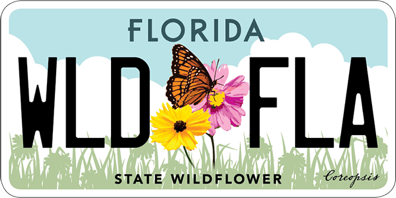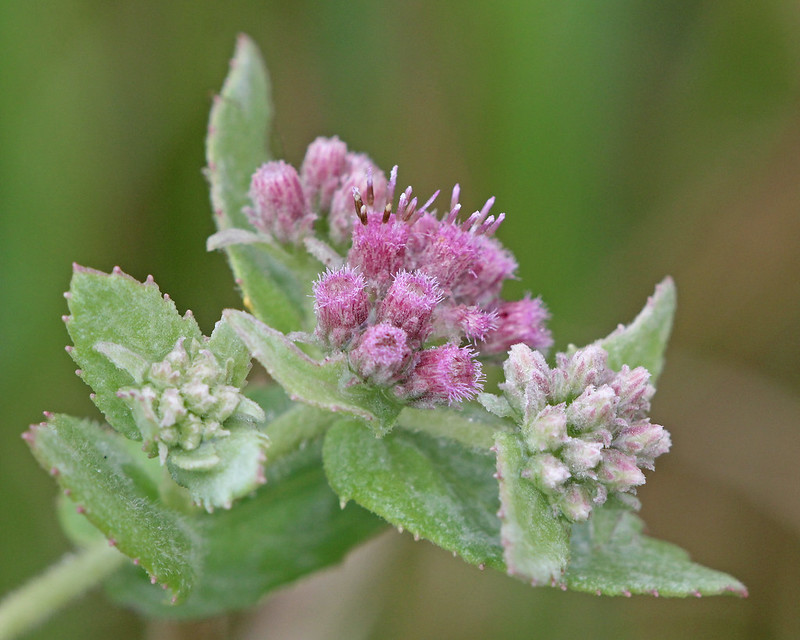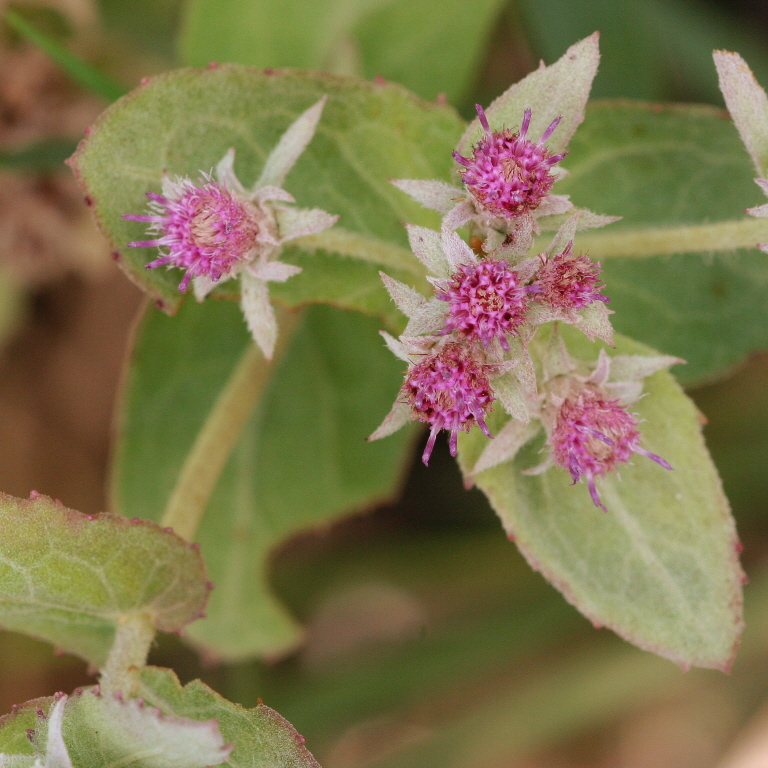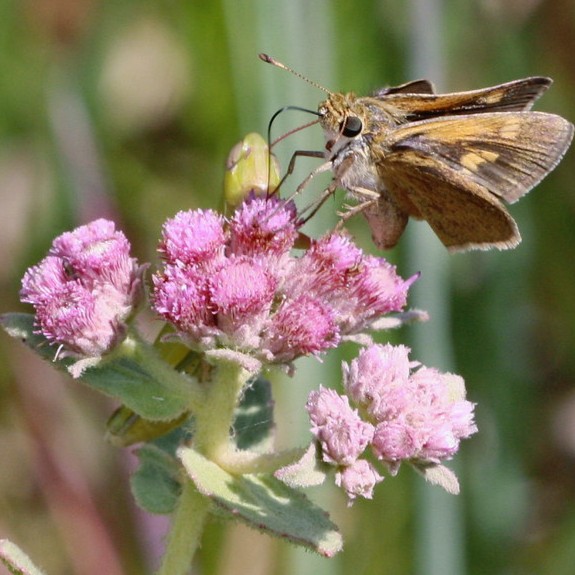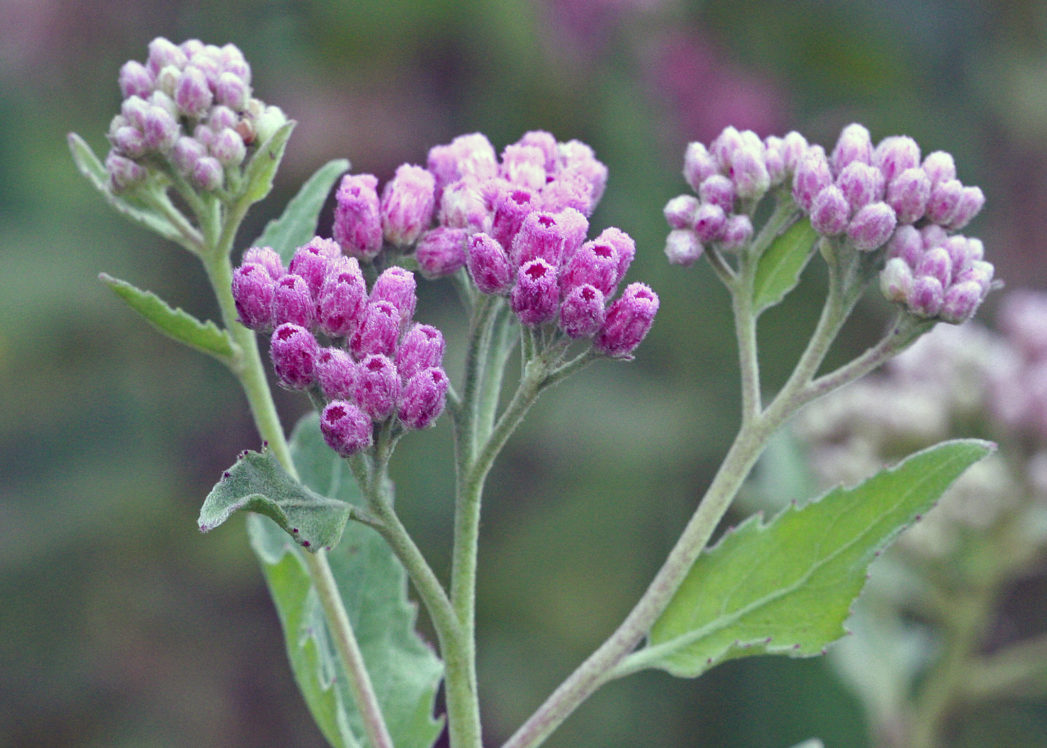Rosy camphorweed
Pictured above: Rosy camphorweed (Pluchea baccharis) by Mary Keim. Click on terms for botanical definitions. View post as a PDF.
Rosy camphorweed (Pluchea baccharis) is a summer-blooming wildflower found in wet habitats throughout Florida, from marshes and wet pinelands to ditches. Its pink flowers are particularly attractive to small butterflies, bees and other dainty pollinators.
Stems range from light green to reddish and are covered in hairs with sticky glands. Leaves are alternately arranged, ovate, and shallowly toothed, with a dusty light green appearance due to their glandular hairs. Rosy camphorweed’s inflorescence is a dense, flat-topped cyme comprised of many tiny pink disk florets. Seeds are born in cypselae tipped with a pappus.
This species can be distinguished from Sweetscent (Pluchea odorata) by the presence of furry, light green to pinkish bracts at the base of each flowerhead — a feature that Sweetscent lacks.
Family: Asteraceae (Aster, composite or daisy family)
Native range: Throughout Florida
To see where natural populations of Rosy camphorweed have been vouchered, visit florida.plantatlas.usf.edu.
Life span: Perennial
Soil: Moist to wet, moderately well-drained to periodically inundated sandy, calcareous or organic soils
Exposure: Full sun
Growth habit: up to 3’ tall
Propagation: Seed
Florida regions of landscape suitability: North, Central, South
Garden tips: Rosy camphorweed is rarely cultivated, but easy to propagate from seed. It can grow in nutrient-poor soils and is moderately salt tolerant, but not drought tolerant. It is best used in a naturalistic landscape or habitat restoration.
Seeds may be available from the Florida Wildflower Growers Cooperative at www.FloridaWildflowers.com
Learn more about Rosy camphorweed from the Florida Native Plant Society and the Institute for Regional Conservation.
For more information on other Pluchea species, see these resources:
